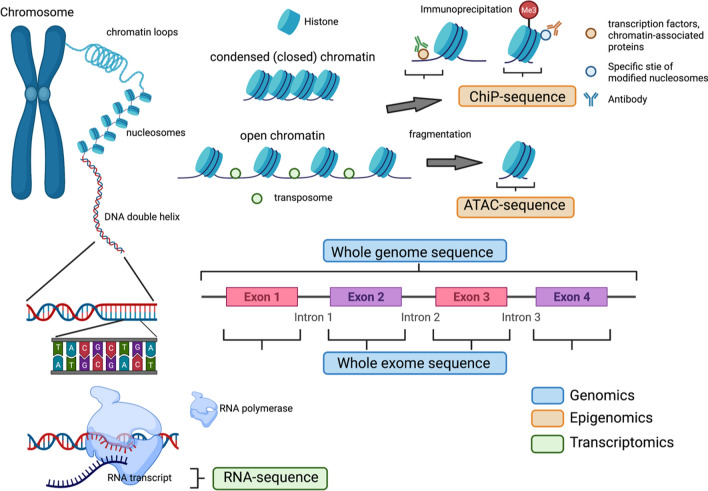Fig. 1.
Genomics, epigenomics, and transcriptomics with next-generation sequencing. In genomics, the whole-exome sequence and whole-genome sequence, reading every single base of DNA systematically, can reveal copy number variations, single nucleotide variants, and gene-fusion events in the whole exome or whole genome. In epigenomics, chromatin immunoprecipitation-sequencing is used to assay the DNA fragments that bind to these transcription factors, other chromatin-associated proteins, or sites that correspond to modified nucleosomes specifically selected using antibodies. The assay for transposase-accessible chromatin using sequencing is an epigenomics technique that captures open chromatin sites using transposase, which can be inserted only in regions of open chromatin, revealing the interplay between genomic locations of open chromatin, DNA-binding proteins, individual nucleosomes, and chromatin compaction at nucleotide resolution. RNA sequencing (RNA-seq), a transcriptomics technique, can not only read every single base of RNA fragment or complementary DNA from large amounts of transcriptome data, but can also be classified into three types, including exonic reads, junction reads, and poly(A) end-reads, assemble transcriptomes with or without a reference genome, and evaluate gene expression profiling

